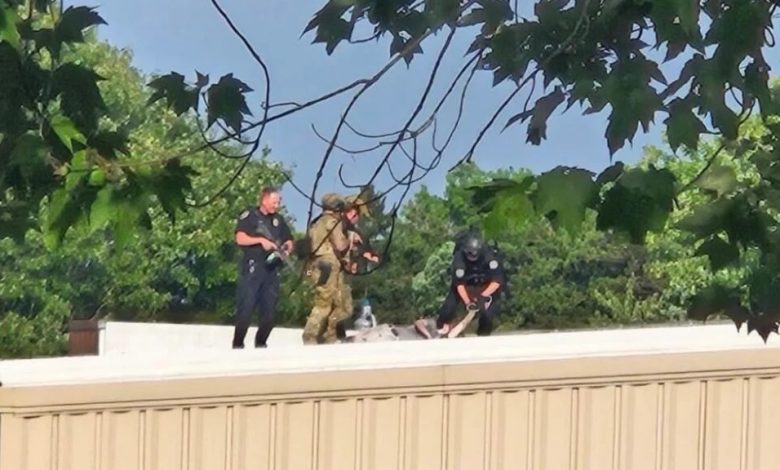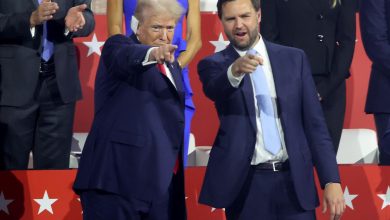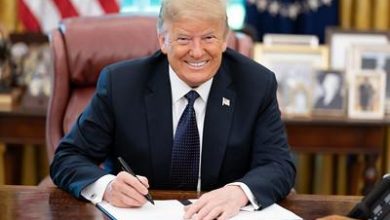Secret Service Agent’s Stunning Call Seconds Before Attempt On Trump Is Revealed

A devastating preliminary report on the failures of the Secret Service is chock-full of anecdotes about just how unprepared the agents around President Donald Trump were on the day of the first assassination attempt against him.
The July 13th shooting was the focus of a U.S. Senate committee probe examining how the former president’s 60-member detail allowed a lone gunman to obtain line of sight with a high-powered rifle just several hundred yards from the event stage. The stunning lapse in security led to a bullet wound on Trump’s ear, the murder of a supporter, 50-year-old Corey Comperatore, and grave wounds to two other rallygoers. The report revealed key missteps that give insight into the Secret Service’s dysfunctional culture.
According to Fox News, an agent operating the agency’s drone equipment was so inexperienced that he called a toll-free hotline seeking support from the company’s manufacturer. His outreach came after the Secret Service gave him just one hour of informal training on how to fly the device. The agent’s request for additional time to train with the unmanned asset was denied.
“Multiple foreseeable and preventable planning and operational failures by USSS contributed to [Thomas] Crooks’ ability to carry out the assassination attempt of former President Trump on July 13,” the preliminary report read. “These included unclear roles and responsibilities, insufficient coordination with state and local law enforcement, the lack of effective communications, and inoperable C-UAS systems, among many others.”
A Secret Service spokesman responded upon release of the report. “We have reviewed the interim report on the attempted assassination of former President Donald Trump. The weight of our mission is not lost on us and in this hyperdynamic threat environment, the U.S. Secret Service cannot fail. Many of the insights gained from the Senate report align with the findings from our mission assurance review and are essential to ensuring that what happened on July 13 never happens again,” U.S. Secret Service Chief of Communications Anthony Guglielmi said Wednesday.
Testimony from members of Trump’s detail as well as agents within the Pittsburgh office revealed that counter-snipers were not informed about a suspicious individual spotted idling along the perimeter of the rally just 27 minutes prior to the shooting. The man, 20-year-old Thomas Matthew Crooks, ultimately scaled a nearby building, positioned himself on a roof and fired at Trump. Shockingly, a counter-sniper who saw agents on the ground running toward the building with guns drawn said the thought to warn others to remove Trump from the stage “did not cross [his] mind.”
“Shortly before shots were fired, a USSS counter sniper saw local law enforcement running toward the AGR building with their guns drawn, but he did not alert former President Trump’s protective detail to remove him from the stage,” the committee revealed in the 94-page report. “The USSS counter sniper told the Committee that while seeing officers with their guns drawn ‘elevated’ the threat level, the thought to notify someone to get Trump off the stage ‘did not cross [his] mind.’”
Elsewhere in the report, witnesses admit that President Trump typically would not have counter-snipers at all. Former heads of state are not granted the enhanced protection unless “credible intelligence” suggests a potential threat. In this case, local law enforcement raised concern about the nearby rooftop, which remains unsecured. Additional requests from Trump’s team, including extra drones and counter-assault agents, were denied. “These requests were denied, at times without explanation,” the committee found.
Acting director Robert Rowe has been front and center in taking blame for the denial of additional resources for Trump. Since taking over for the former director who resigned after the shooting, Rowe has been implicated in participating in the decisions to deny Trump. Agents on the ground that day also say that no clear chain of command was established for communicating potential threats while others “denied that they were individually responsible for planning or security failures and deflected blame,” according to the report.
“I don’t approve anything,” the lead advance agent was quoted as telling senators. “I clearly just take the information that they [the USSS site agent and USSS site counterpart] have recommended and put together with the other information that’s put together from the other advance entities, and those are all submitted to the field office and then submitted to the Trump detail, the candidate nominations operations, and then they go further to headquarters.”
Guglielmi, the Secret Service spokesperson, continued, “The U.S. Secret Service has implemented changes to our protective operations including elevating the protective posture for our protectees and bolstering our protective details as appropriate in order to ensure the highest levels of safety and security for those we protect. As Acting Director Ronald L. Rowe said during press conferences on Sept. 16 and Sept. 20, former President Donald Trump is receiving the highest level of protection that the U.S. Secret Service can provide, and we will continue to evaluate and adjust our specific protective measures and methodology based on each location and situation. We are also diligently examining long-term solutions to challenges such as enhancing communications and interoperability with our federal, state and local partners to make sure our coordinated efforts during protective events are seamless.”


